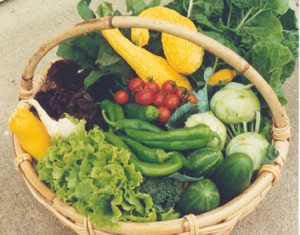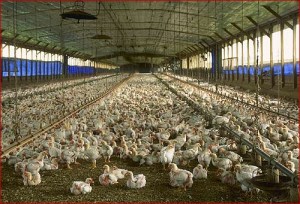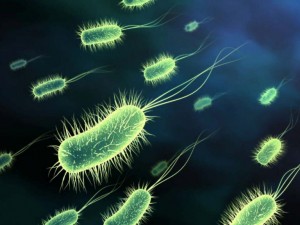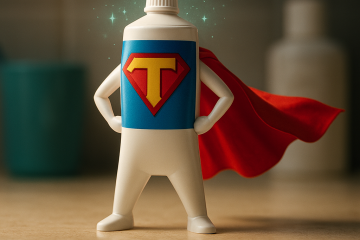by Kellene
 In the last two segments in this series on Food, I’ve attempted to address our vulnerable reliance on our world’s food supply. When there is a shortage, we pay for it dearly. When a great deal of products are reliant upon one particular crop, we give away much of our freedom as well. When the core of our habits for feeding and enjoying are based on a particular product, we are also subjected to the price demands which come with such dependence. I’m sure that many of you remember how difficult it was to adjust our monthly budgets to meet the drastic increase in fuel prices. Not long after that shock, over 70% of all credit card holders had their minimum payments on their credit cards increase substantially. Thus far I’ve addressed the availability and the cost of our foods due to our system at present and how our preparedness efforts can counteract such unpleasant realities. Today, I believe I’m addressing an even more important aspect of food though—it’s compromised nutrition.
In the last two segments in this series on Food, I’ve attempted to address our vulnerable reliance on our world’s food supply. When there is a shortage, we pay for it dearly. When a great deal of products are reliant upon one particular crop, we give away much of our freedom as well. When the core of our habits for feeding and enjoying are based on a particular product, we are also subjected to the price demands which come with such dependence. I’m sure that many of you remember how difficult it was to adjust our monthly budgets to meet the drastic increase in fuel prices. Not long after that shock, over 70% of all credit card holders had their minimum payments on their credit cards increase substantially. Thus far I’ve addressed the availability and the cost of our foods due to our system at present and how our preparedness efforts can counteract such unpleasant realities. Today, I believe I’m addressing an even more important aspect of food though—it’s compromised nutrition.
I think we’d all like to believe that if we have a clump of broccoli on our plates, that it’s good for us. We’d also like to assume that if we have a fresh piece of tuna seared to perfection, that it too is beneficial to our body, right? Unfortunately, in the name of control, technological advances, bigger crop yields, and down right greed, the nutritional content of our food is not all it’s cracked up to be in our minds.
I don’t know if many of my readers will remember this, but there was a time in which the FDA actually said that one cigarette a day was good for you. In fact, they even went so far as to have two DOCTORS make this statement for all of the media to see. (See “The World Without Cancer” by G. Edward Griffin) Eventually they lowered their tone a bit and simply claimed that cigarettes were not harmful. Regardless of how their tone changed, keep in mind that all along the way, the USDA and the FDA stood by their approval of the use of cigarettes. After all, it was an ideal money maker for all involved.
Unfortunately, it’s true what they say about history repeating itself. Sure there are different characters, altered acts, and varied dollar amounts, but it all boils down to the same plot. Group A (the instigators) has a product that they want to promote in order to save more money, make more money, and produce more product. Group B (the backers) approves the idea. Group C (the cautious) rebel against the idea due to valid concerns. Then Group A and B hire the sharp legal minds of Group D to keep Group C out of the picture so that they everyone in Group A, B, and D can make money by selling their wares to Group E. (That’s E, for Everyone else.) Ok. So what realistic A,B, & D showdowns do we have going on right now?
(First of all, here’s a disclaimer. I do not write this article as an attack on farmers. It is my opinion that farmers as a whole are the recipients of this corporate shakedown. I do wish, however, that farmers of courage and intelligence could stand united and put a stop to all of this, much like the courageous David against Goliath…)
Food Additives
 Ammonia is now added to your poultry and beef in order to help kill the e-coli virus. Wait. How do they get e-coli? Well, they are raised knee-deep in their own feces, in darkened facilities (to promote docility). Instead of being raised on the fruits of God’s green earth and sunshine, they are raised on massive amounts of nutritionally deficit fillers in order to substantially increase their yield. Specifically when it comes to chickens, this method enables the industry to grow a chicken twice as big in half of the time! The average chicken farmer spends roughly 20% of their budget on the anti-bacterial ingredients that they feed their chickens! Yup. Kind of freakish, if you ask me. I’ll spare you the details of the consequences of such a Frankensteinian method. Unfortunately, the filler feed and “housing” conditions cause severe health problems for the flocks and herds which then resorts to the industry regularly injecting their herds with antibiotics. Did you know that the average person eats 200 pounds of meat per year?! That’s an awful lot of hormones and antibiotics that we’re putting into our bodies!
Ammonia is now added to your poultry and beef in order to help kill the e-coli virus. Wait. How do they get e-coli? Well, they are raised knee-deep in their own feces, in darkened facilities (to promote docility). Instead of being raised on the fruits of God’s green earth and sunshine, they are raised on massive amounts of nutritionally deficit fillers in order to substantially increase their yield. Specifically when it comes to chickens, this method enables the industry to grow a chicken twice as big in half of the time! The average chicken farmer spends roughly 20% of their budget on the anti-bacterial ingredients that they feed their chickens! Yup. Kind of freakish, if you ask me. I’ll spare you the details of the consequences of such a Frankensteinian method. Unfortunately, the filler feed and “housing” conditions cause severe health problems for the flocks and herds which then resorts to the industry regularly injecting their herds with antibiotics. Did you know that the average person eats 200 pounds of meat per year?! That’s an awful lot of hormones and antibiotics that we’re putting into our bodies!
During the documentary, “Food Inc.” one of the chicken farmers was interviewed while cleaning his chickens out in an open field. He claims that the USDA attempted to put a halt to his method of cleaning his chickens “out in the open like that” because it was “unsanitary.” Unsanitary, huh? Yet hormones, antibiotics, ammonia, and feces are perfectly acceptable, eh? In addition, the farmer states that the way he won his case in this matter was to have his chickens tested by an independent laboratory. Comparing his whole chicken to a standard industrialized chicken from the grocery store, the test concluded that his chicken had only 133 CFU whereas the industrialized chicken had a whomping 3,600 CFU—and THAT was after several chlorine baths! (CFU denotes the count of colonies of microscopic bacteria—“colony forming unit”)
So, question for ya. Do you think that ammonia kills nutrients as well? Ok. That’s your protein source. Let’s look at your produce.As you know, the bacteria salmonella has been found in tomatoes, peppers, spinach, and lettuce as of late. Why? Well, here’s one reason. In part, it’s because salmonella is readily found in animal related food products. When it comes to animal related foods, 4 companies control over 80% of the processing market. Currently only a small handful of companies actually handle the majority of ALL of our food system. So, if only one company decides to cut corners and not treat the foods being imported from Thailand, India, China, or Egypt and you’ve got a salmonella outbreak in your dog food, Black Angus beef, peanut butter, Little Debbie Snack Cakes, and your table black pepper. Supposedly, the only CHEAP way to take care of salmonella or other like bacteria is through an irradiation process. Yes, it’s a form of radiation, much like that used to kill cancer cells. As you know radiation kills ALL of the good and the bad bacteria. (Not only does irradiation compromise the nutritional content of your foods, but it’s also used on pharmaceutical products. As such, it’s blamed for compromising the effectiveness of many pharmaceutical supplies.) Yup, Folks. We’ve got nutritional compromise at its best. On top of that you have pesticides, depleted nutritional content of the soil, and the mandatory use of genetically modified seeds (Note: Monsanto currently OWNS over 90% of all of the soybean seeds used in our crops and actively seeks to SUE/punish the last holdouts for “patent infringement” – in many instances crippling the hold-out heroes by depleting their entire financial worth in the process—(Do an internet search on “Monsanto vs. farmers”) Here’s another awful truth. Unless you are a highly vigilant consumer, you eat genetically modified food everyday. Over 70-75% of all processed foods on our shelves have GMO content. (For those of you who aren’t aware of the consequences of GMO foods, check out this medical study)
Where is our food coming from?
Ok. So should we stop buying our produce from manufacturers, and pay the much higher prices for cleaner food? Ouch. Thanks to hyper-inflation, deep recession, fuel increase, I don’t think that my budget can handle much of that. So what about growing my own produce? Well, that’s great, although there is a fly in that ointment as well. Monsanto has already obtained some legal standing to make it a criminal act to save your seeds so that you can reuse them for chemical and genetic-free food—instead of constantly buying hybrid seeds—this coming from the primary provider of hybrid seeds in the world! Yes. The plot thickens. As you can see, our daily nutrition intake is unwittingly being determined in the board rooms, not at our dinner tables or even the doctor’s offices.
Unfortunately, addressing it all is making this article WAY too long for one day. So tune in tomorrow for the rest of this piece. Sorry to leave you hanging in an agitated state. Allow me to tell you that I do have some sound solutions for you that play a roll in your food preparedness efforts and they are easily done. It’s a matter of being aware.
Till then…
Food Part II: Some Kernels of Truth
Food Part III: Nutritional Compromise
Food Part IV Nutrition Insurance





9 Comments
ToughTimes · January 26, 2010 at 7:03 am
Do chickens have knees???(raised knee-deep in their own feces, in darkened facilities to promote docility)….and darkened, no, just the opposite. The
temp controlled houses are artificially lit 24 hrs/day so poultry don’t go into roost-mode therefore they eat around the clock to gain faster. I agree with the generalities of this artical, but you can tell the info was generatated by Group C -treehugginveginglobalwarmintypes. One Group was left out of your senario, Group 00 or whatever comes before A, the farmers and ranchers. You see, once grains are combined and sent to the elevator or calves are weaned off grass and cows and sold…they are Group 00. All the bastardizing of healthy product starts when A,B,C&D get in the game.
Just had to get that off my chest…I am a big fan of yours and look forward to each and every post, but I feel a little David was needed in rebute of the Goliath one-sidedness.
…”Farming looks mighty easy when your plow is a pencil and you are a thousand miles from the cornfield”. “Dwight D. Eisenhower
Kellene · January 26, 2010 at 4:53 pm
Hah. I liked the knee deep comment. However, I recommend that you watch the movie Food Inc. My description, as well as attestations from poultry farmers is there, plain as day. Then go over to the blogs of the producers, and such and even more heinous information is documentend. Ugh!
I also like your Eisenhower quote. Bastardizing is an appropriate terms too, I think. That’s exactly why I stated that the farmers are subjects of the shake downs. One of the poultry farmers that was featured in the movie, specifically lost her Tyson contract because she was not willing to “upgrade” to the darkened tunnel with no windows. Sorry. As awful as it is, I stand by my claim that they are raised in darkened facilities.
cheryl · January 26, 2010 at 3:20 pm
hi glad you are better and back. i did see food inc I do grow some of the food we eat. And will be growing more.Because of all you said, and the price of food. I can see what is comeing with all that i read ,see on the news, that i need to do what i can to take care of my family. i do what i can and god will help me with the rest. i belive we will need a lot of differnd sorces to get good healty food .i see myself doing more of how my grandmother lived .
Debbie · January 26, 2010 at 3:41 pm
Years ago there was no such thing as dog food in a bag. They lived off table scraps, the same with cats. One thing I do know is that I can’t eat eggs in the USA. It has happened in two places, Florida and Texas, when I eat them there I break out with hives and my mouth gets tingly and I have a rash, yet I can eat them back home in Canada no problem (where I live, I haven’t tried them in every province of course). So I don’t know what they are feeding the chicken in the south but it sure isn’t the same thing as back home. I too started a garden last year and have plans to expand, I am also adding some fruit trees, and some berry bushes. I haven’t figured out how to grow a rump roast yet and the city won’t let me keep chickens, so I’m going to find a farmer and start buying my beef locally. Its a little more but hey he has to make a living to and at least I’ll know what it was raised on (hopefully).
Kellene · January 26, 2010 at 4:54 pm
that’s very interesting, Debbie. Thanks for sharing your comment.
TODD · January 26, 2010 at 5:13 pm
@Debbie
It is probably an allergy to the GMO Soy they are fed.
TODD · January 26, 2010 at 7:33 pm
I don’t know about dark or not. A lady I work with has a chicken farm, she said they don’t change the bedding at all for 6 weeks and when they are full grown they are shoulder to shoulder. They try their best to raise them antibiotic free, they get more money if they can. I also know that here in PA most dairy cows don’t go outside at all.
Debbie · January 27, 2010 at 1:43 am
Wow thanks Todd, I didn’t know they were fed soy, but guess what, I do know that I’m allergic to soy. Never did I figure that chickens were fed soy.
jamie · January 27, 2010 at 8:39 pm
@Debbie Does your city code prohibit rabbits? I got my city code and was quite surprised all the did allow, depending on the size of your property/lot.I never thought about a pot-bellied pig or a medium sized agricultural animal, but I could have one here if I wanted. Just as an example.
Also some cities have reversed the no chicken code. I believe Denver Colo. went from no chickens to allowing 3 hens.
Comments are closed.